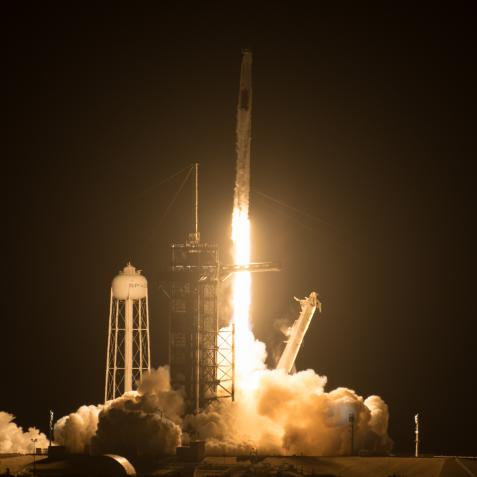
Karim Nafatni
Caught: UFO Sighting Over of New Mexico
We’re not saying it was aliens… but what else could it be? A look into a recent UFO sighting over the northeast corner of New Mexico.
American Airlines flight 2292, with service from Cincinnati to Phoenix, last weekend, saw a bit more in the sky than an ordinary cloud or two. A radio transmission was intercepted accidentally by a blogger, Steve Douglass, who was using a radio scanner to pick up another aircraft. According to the audio published on Deep Black Horizon, at the perfect moment Douglas was linked with flight 2292’s radio transmission, he heard the pilot radio, “Do you have any targets up here? We just had something go right over the top of us at 1:19PM CST on Sunday. I hate to say this, but it looked like a long, cylindrical object that almost looked like a cruise missile type of thing, moving really fast, right over the top of us.”
Douglass was able to utilize flight-tracking websites to pinpoint exactly where the aircraft was at the time of the unexplained sight, which enabled him to discover at an altitude of 37,000, feet, the plane was, “over the northeast corner of New Mexico, west of Clayton, New Mexico.”

Cavan Images
Northern New Mexico
The day after, the FAA released a statement about what was supposedly seen, explaining, “a pilot reported seeing an object over New Mexico shortly after noon local time on Sunday, Feb. 21, 2021. FAA air traffic controllers did not see any object in the area on their radarscopes.” While, to the public’s knowledge we have yet to identify what these objects in the sky are, it comes as no surprise that these sightings happen “fairly regularly.” Specialists on the subject have assured there’s usually a “logical explanation” for these types of sightings, however, the US government has been notorious for keeping this information classified.
The US Navy explained to Politico that, “a number of reports of unauthorized and/or unidentified aircraft entering various military-controlled ranges and designated airspace in recent years.” To hone in on this issue, in April 2019, the US Navy modified how pilots reported UFO sightings to create more of a “data-driven approach.” According to The New York Times, one month later (ironically so), there were five reports from Navy pilots explaining they had seen mysterious and unidentifiable objects in the sky, traveling at exhaustive speeds and heights.
Fast forward to April 2020, three videos taken by Navy pilots--one in 2004 and two in 2015--that were released by the Pentagon to, “clear up any misconceptions by the public on whether or not the footage that has been circulating was real, or whether or not there is more to the videos, furthermore stating the aerial phenomena observed in the videos remain characterized as ‘unidentified.’”
Although unidentified, last December’s COVID relief bill under the Intelligence Authorization Act states that US intelligence agencies are required to disclose their findings and current searches by mid-2021-to Congress. In the coming months, there’s a possibility that we could have the answers as to whom has been sharing the sky with us- a friend or foe… or both?


















